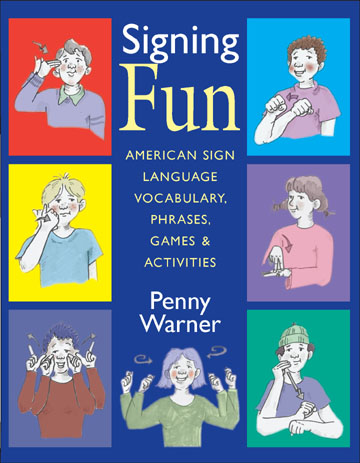Related Products
For Parents
Related Teacher Tools Takeout Items
Effective Practices in Early Intervention
 A critical part of improving developmental and educational results for children with disabilities is using effective practices in early intervention, wherever services are being provided—an agency setting, the home, and across the child’s natural environment.
A critical part of improving developmental and educational results for children with disabilities is using effective practices in early intervention, wherever services are being provided—an agency setting, the home, and across the child’s natural environment.
An impressive knowledge base of experience has been built on the delivery of early intervention services. We are pleased to launch you into that knowledge base with these “starter” connections to the experts.
- Organizations with Serious Expertise
- Let the Children Play (to Learn)
- Addressing Behavior Challenges in Young Children
- Assistive Technology for the Little Ones
Organizations with Serious Expertise
Land first at NECTAC.
NECTAC is the National Early Childhood Technical Assistance Center. That name says it all, doesn’t it? The link we provide takes you to NECTAC’s “topics” page, where you can pick your pleasure.
http://www.nectac.org/sitemap.asp#topics
Early Childhood Research & Reference Portal.
Also from NECTAC, the portal links to national and state by state EC data sources, evidence-based practices, online journals, literature databases, and grants databases.
http://nectac.org/portal/portal.asp
Visit Project CONNECT.
CONNECT is developing web-based, instructional resources for faculty and other professional development providers that focus on and respond to challenges faced each day by those working with young children with disabilities and their families. The modules help build practitioners’ abilities to make evidence-based decisions.
http://community.fpg.unc.edu/
Promising Practices.
The Promising Practices Network site features summaries of programs and practices that are proven to improve outcomes for children. All of the information on the site has been screened for scientific rigor, relevance, and clarity. Explore, explore!
http://www.promisingpractices.net/default.asp
Do you hear an ECO?
ECO is the Early Childhood Outcomes Center. It provides national leadership to help states implement high-quality outcome systems for early early intervention and early childhood special education programs.
http://projects.fpg.unc.edu/~eco/index.cfm
Let the Children Play (to Learn)!
Solutions Tool Kits: Practice guides for parents and early childhood staff alike.
The RTC on Early Childhood Development just keeps on comin’ with materials you can use. Their Solutions Tool Kits include collections of practice guides for promoting child development and learning. Any of these interest you?
Games for growing: Teaching your baby using early learning games.
www.researchtopractice.info/productSolutionsGG.php
Lap It Up: Early learning through parent-child lap games.
www.researchtopractice.info/productSolutionsLU.php
Powerful Playtime: Toys and learning for the very young child.
www.researchtopractice.info/productSolutionsPP.php
Literacy for Little Ones: Activities to boost beginning reading, writing, and much more!
www.researchtopractice.info/productSolutionsLLO.php
Visit CELL, the Center for Early Literacy Learning.
Lots of practice guides here, for promoting early literacy learning. Guides for parents and practitioners, including many in Spanish.
http://www.earlyliteracylearning.org/
Reading the intentionality of young children.
Through six video clips and accompanying commentary, this article describes how, by carefully observing how very young children play, adults can gain insight into their high-level thinking and their knowledge, as well as the implications that their strategies hold for their assumptions, theories, and expectations. Adults can then become more protective of children’s time during play, more skillful in making a parallel entry into their world, and more effective in helping them extend or reconsider their assumptions about how the social and physical world works.
http://ecrp.uiuc.edu/v12n1/forman.html
Up Close and Personal: Strengthening the parent-child relationship.
www.researchtopractice.info/productSolutionsUCP.php
Hands-on ways to build social emotional skills through everyday routines.
Visit the Book Nook at CSEFEL (Center on the Social and Emotional Foundations for Early Learning) and have a look at the guides offered there for teachers/caregivers and parents. Examples of suggested activities include using rhymes to talk about being friends, making emotion masks to help children identify and talk about different feelings, playing games around what to do with hands instead of hitting, and fun music and movement activities to express emotions.
http://csefel.vanderbilt.edu/resources/strategies.html#booknook
Online module on embedded interventions.
Learn about the practice of embedded interventions to help children participate in a variety of early learning opportunities and environments promoting high-quality inclusion. Available in English and Spanish. From Project CONNECT.
http://community.fpg.unc.edu/connect-modules/learners
Addressing Behavior Challenges in Young Children
Accentuate the Positive: Strengthening positive child behaviors.
www.researchtopractice.info/productSolutionsAP.php
Helping children learn that there’s a relationship between their behavior and its consequences.
The RTC on Early Childhood Development describes what’s effective in “early contigency” learning and how disability or developmental delays affect a child’s speed in learning the connection between their behavior and the consequences it may have. Implications for practice are described in terms of the environmental arrangements most likely to optimize the greatest amount of positive social responding. And hey! There’s info in Spanish: ¡Sí! ¡Hice que pasará! (YES! I made it happen!) and¡No hay apuro! Las investigaciones comprueban que vale el ser paciente (No rush! Research proves it pays to be patient).
www.researchtopractice.info/productBridgesBBPecl.php
Effective practices for preventing challenging behavior.
This brief from the Center for Evidence-Based Practice: Young Children with Challenging Behavior describes several early intervention strategies, including: (a) arranging of the classroom environment, (b) scheduling, and (c) implementing rules, rituals, and routines.
http://www.challengingbehavior.org/do/resources/documents/rph_preventing_challenging_behavior.pdf
The 6 steps of positive behavior support.
From the Technical Assistance Center on Social Emotional Intervention for Young Children.
http://www.challengingbehavior.org/explore/pbs/process.htm
Positive beginnings: Supporting young children with challenging behavior.
Six online modules for inservice and preservice early interventionists and early childhood educators.
http://pbs.fsu.edu/return.html
Supporting children’s mental health and reducing challenging behaviors.
Visit the Center for Early Childhood Mental Health Consultation, whose target audiences include Head Start administrators, staff, and programs, as well as mental health consultants and families. The Center translates research in healthy mental development into materials tailored to the needs of each of the target audiences, and makes them available on this website.
http://www.ecmhc.org/index.html
Teaching tools.
“Teaching Tools” is a product of the Technical Assistance Center on Social Emotional Intervention. They are meant to assist teachers in developing a plan to support young children who are having challenging behavior.
http://www.challengingbehavior.org/do/resources/teaching_tools/ttyc.htm
Assistive Technology for the Little Ones
Using assistive technology.
Research shows that using assistive technology can help young children with disabilities learn valuable skills. Find out more about AT for infants and toddlers at the link below.
www.pacer.org/publications/pdfs/ALL7.pdf
Really? Assistive technology for infants and toddlers with disabilities?
Yes, indeed, there are many ways in which AT can optimize such young children’s development and learning. Visit the Tots ‘n Tech Research Institute (TnT) and find out how. TnT has lots of materials and guidance for families and early interventionists alike.
http://tnt.asu.edu/
Funding assistive technology.
This annotated bibliography from NECTAC presents resources exploring the various assistive technology funding sources for infants, toddlers and young children with disabilities.
www.nectac.org/~pdfs/pubs/atfunding.pdf
This information has been included, with sincere appreciation, from the National Dissemination Center for Children with Disabilities website, which provided informational resources for over 20 years. Regrettably, funding from the Office of Special Education Programs (OSEP) at the U.S. Department of Education ended on September 30, 2013. Our thanks to the many individuals who compiled and created this useful information. Posted to Supporting Success for Children with Hearing Loss January 2014.

